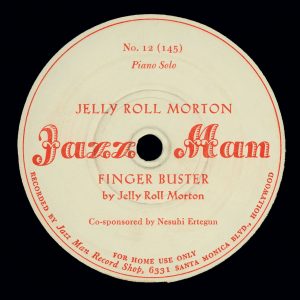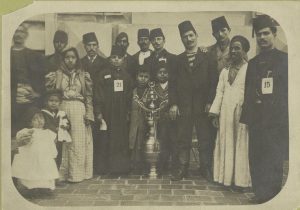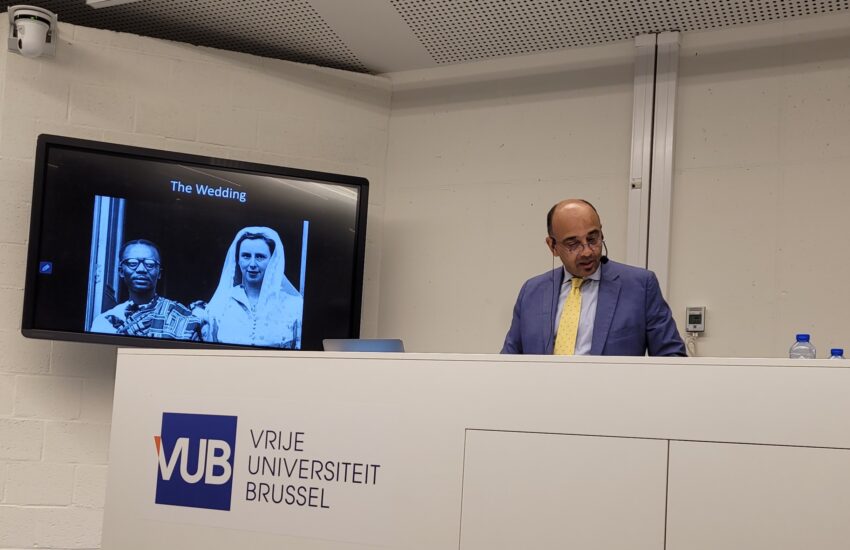SIYAH: The Sultans of Jazz: Part I
A Reappraisal of the Turkish Influence on African-American Music
Ahmet and Nesuhi Ertegün were two Turkish teenagers who arrived in the United States in 1935. But they could not have possibly known the role they would play in both American popular culture and the fight against racial segregation. They established Atlantic Records, one of the most revolutionary record labels in the US. The company launched the careers of Ray Charles, Aretha Franklin, Miles Davis, the Rolling Stones, and Led Zeppelin. This is the tenth instalment in ‘Siyah’, which explores the relationship between African Diaspora and Turkish social and cultural narratives, with journalist Adama Juldeh Munu.

Washington DC’s 1930s electric jazz scene first exposed the Ertegün brothers to African-American music genres including spirituals, blues, and gospel music. This was primarily because of their father’s diplomatic status. Mehmet Münir Ertegün was appointed Turkish ambassador to the US from 1934 to 1944. However, Jim Crow laws which legalised segregation between European-Americans and African-Americans in the social, public and economic spheres, prevented them from engaging with African-Americans openly. Ahmet recalls this: “We had a lot of friends in Washington, and we could never go to a restaurant together, never go to a movie, or go to the theater with them…it was impossible to go out. I couldn’t even take Duke Ellington, who is one of the geniuses of our country, to a restaurant… That’s how it was and we could not accept it.”
From 1940, the brothers began inviting jazz musicians they had seen play at the Howard Theatre on Saturdays to the US embassy to perform. These included musicians such as Duke Ellington and Louis Armstrong, who were allowed to flout the social convention of the times by being allowed to enter through the front door and not the back. This was a sticking point for European-American officials. Ahmet describes a conversation between his father and a Southern senator, who also happened to be a neighbour. “My father would respond with a terse one-sentence reply such as ‘In my home, friends enter by the front door – however, we can arrange for you to enter from the back’.” But they didn’t stop there. The Ertegüns launched the city’s first integrated concert in 1942 at the Jewish Community Center. They also went on to organise the National Press Club’s first integrated event, a concert that featured folk and blues artist, Lead Belly.
When their father died in 1944, Ahmet and Nesuhi chose to remain in the US. While Nesuhi briefly moved to Los Angeles to open up a record shop and company, Ahmet moved to New York in 1947 where he worked at a local record store owned by his friends, his future business partners Herb and Mariam Abramson. Here he learned about the music retail industry while studying at Georgetown University. Nesuhi eventually joined his brother in New York. After a few failed attempts in running a successful music label, the Ertegüns and Abramsons acquired a $10,000 loan from a family friend to establish Atlantic Records in 1947.
While his brother Ahmet ran executive affairs, Nesuhi also produced a number of successful jazz records with the likes of John Coltrane, Ornette Coleman and the Modern Jazz Quartet. Nesuhi later started his own distributing company and jazz label. The company mainly put out what was then known as ‘race music’, a term used to describe all music made by African-Americans. Over the decades, the company evolved its musical portfolio to include rap, pop, rock and R&B. Their investment in various musical genres has been dubbed ‘The Ahmet Factor’ and has been regarded as an important blueprint for subsequent record labels.

That is not to say that African-American musicians and music executives lacked cultural agency in curtailing and battling racism. Some of the most illustrious sounds and records came from Black-owned labels such as Detroit’s Motown which launched and propelled the successful music careers of the Jackson Five, Marvin Gaye, Stevie Wonder and Diana Ross. What is significant is how the Ertegün brothers exemplified effective allyship – a word that has garnered greater prominence in the era of Black Lives Matter. One could argue that they did this successfully without detracting attention from their African-American counterparts.
The fact that their Turkish identity did not impede their ability to manoeuvre a highly racialized industry is worth mentioning, given that certain European nationals, including Italians and Poles, had to fight hand to hand to negotiate their whiteness up until the mid-20th century. In Evangelism: An Americanized Christianity (2006), Richard Kyle explains that whiteness in the US context had a very narrow definition and excluded people who would be considered white today. It was borne from ideals related to European nativism. He states: “American values bore the stamp of this Anglo-Saxon protestant ascendancy. The political, cultural, religious, and intellectual leaders of the nation were largely of a Northern European Protestant stock, and they propagated public morals compatible with their background.”

However, in Working Towards Whiteness (2005), David R. Roediger explains how newly arrived European immigrants lived in a ‘racial flux’ during the 19th and up to the mid-20th centuries. They were ‘placed’ below Northern European-descended whites and above people of African descent, and in order for them to rise above their allocated pecking order, historians argue many worked to prove their cultural and biological fitness to be considered ‘white’. But Turks were naturalized into ‘whiteness’ as early as the 20th century at a time when modernizers in Afghanistan, Iran and Japan were attempting to extrapolate ‘whiteness’ to procure a sense of modernity and progression. In 1909, a circuit court in Cincinnati ruled “a Turkish citizen shall be naturalized as a white person.”
The question of whether Turks are ‘white’ was the subject of a New York Times piece which concluded that they are also Europeans, as much “as the Huns, Finns, and Cossacks.” Part of this was shaped from a growing Turcocentrism that developed mostly under the Turkish Republic’s founding father, Kemal Ataturk. It drew upon that idea that Turks had close proximity to Western civilisation and identity in the name of modernity. In turn, Western intellectuals and thinkers responded positively towards Turcocentrism as a part of European identity. The French writer Léon Cahun (1841-1900) claimed in his lecture Life and Prehistoric Migrations of the People called Turks (1873) that Turks are native Europeans, for instance. It would therefore be a mistake to think that race in Turkish societal discourse suffered absenteeism. Turkism and the conceptualisation of the Turkish race were integral to Kemal Ataturk’s modernism and secularism project during the 1930s.
So, while the Ertegün brothers, the children of diplomats, were relatively sheltered from these discourses, their ability to manoeuvre against and circumvent the social protocols of the time in the US, was primarily shaped by such discourses.
Though the Ertegün brothers irrefutably helped open up a world of possibility for many African-American musicians during Jim Crow, there will be those who’ll argue that it is difficult to ignore how their position as cultural intermediaries sits uncomfortably in conversations around cultural appropriation, and the fight for Black people to own their own cultural institutions. Before his death in 2005, Ahmet told an interview how he wanted to be remembered: “I did a little bit to raise the dignity and recognition of the greatness of African-American music.”



Amazing contribution to civil rights movement. I found your page after reading about Mehmet Munir Ertegun , father of Ahmet Ertegun, who was famous for having his African American friends visit the Turkish embassy, enter through front door ( this was during 1934-1944) and have jazz parties at the Turkish Embassy with African American prominent jazz singers .
Respect goes to to Mehmet Munir Ertegun who must be great person and a great father evidenced by his sons and their contributions.